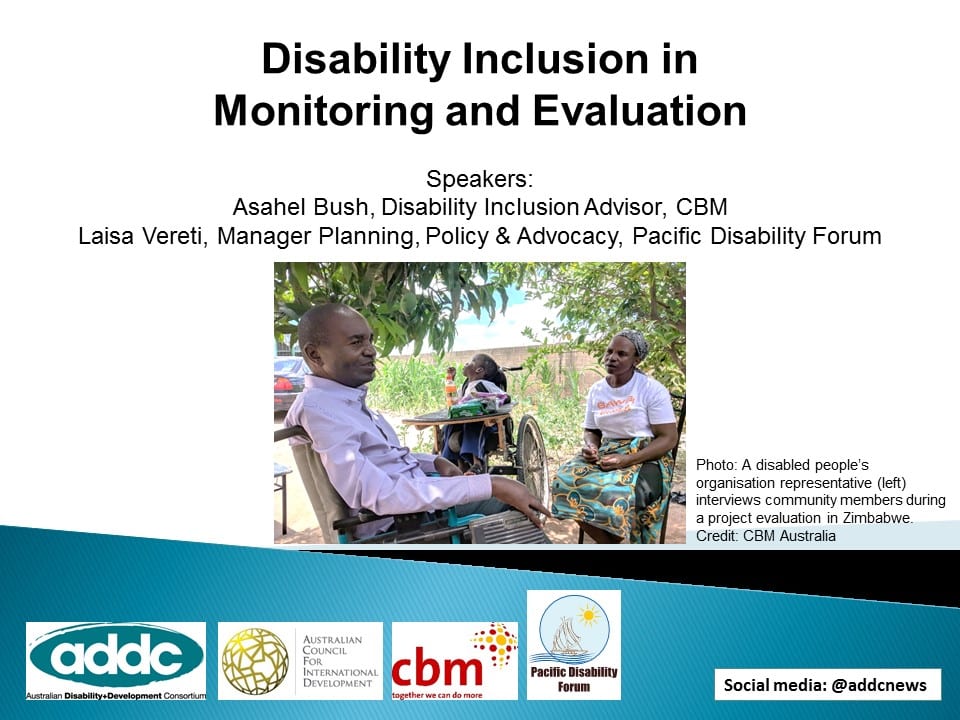Disability Inclusion and Monitoring and evaluation
Understanding the broader outcomes and the change created by development and humanitarian programs is an important piece of all international development work. Including people with disability in both the information collected and the process of collecting it is key part of understanding that change. With the growing recognition that people with disability experience disproportionately higher levels of poverty and exclusion than many other groups, and that good practice requires a focus on ‘leaving no one behind’, there is a need to ensure our monitoring and evaluation practices are properly capturing and contributing to meaningful outcomes for people with disabilities.
ADDC coordinated a webinar with two expert presenters on this very topic to help you enhance inclusion within monitoring and evaluation practices.
The webinar focused on three areas:
- What monitoring and evaluation could and should be telling us about disability inclusion within international development and humanitarian programming;
- Approaches to collecting this information, including discussion of the strengths and challenges of collecting disability-disaggregated data;
- The importance of including people with disabilities in the process of monitoring and evaluation, and some examples and tips for how this can be done.
See the video from the webinar as well as other resources below. Thank you Asahel, Lasia and ACFID for partnering in this webinar.

Practice Note on disability data collection
This Practice Note has been prepared by Plan International Australia and the CBM Australia-Nossal Institute Partnership for Disability Inclusive Development. It identifies principles, practices and approaches to guide agencies in effectively collecting and analysing data related to disability, and using this to strengthen disability inclusion within programs. It discusses key issues and principles to consider in collecting data in a disability inclusive way, and how to use information gathered to strengthen disability inclusion throughout the program cycle.
